What is DWG? DWG- This is a file format for electronic drawings created in the AutoCAD program. Here is an example of a file with an AutoCAD drawing: "my_drawing.dwg". In the example above, my_drawing is the name of the drawing file, and dwg- file extension that defines its format.
Why did the developers of AutoCAD choose just such an extension for drawing files? The fact is that in English the drawing is called "drawing". If we take the first, middle and last letters from this word, we get - dwg.
dwg format is a binary file format and is used to store 2d and 3d data and project metadata. DWG is a native format not only for AutoCAD. It is also supported in programs such as nanoCAD, IntelliCAD, etc. Revit programs Architecture, Revit Mep, Revit Structure, Inventor, Solidworks can also export their projects in dwg. DWG is now the main format for electronic drawings and 3D CAD 3d models.
Programs that work with dwg usually automatically save temporary drawing files with the ".sv$" extension on the computer's hard drive. It is very useful.
Imagine the following situation: You are sitting at your computer doing a project in AutoCAD. Are you working on dwg drawing more than an hour, a lot has already been done, but the work has not yet been completed and they forgot to save. In the meantime, the electricians in the entrance cut off the electricity... The computer turns off... All the work could go down the drain. But luckily we have automatic blueprint backups stored in temporary sv$ files. All you need to do is turn on the computer, find the file you need and rename it by changing the resolution to dwg. Everything! You can open this file in AutoCAD and continue working.
However, there is one subtlety here. AutoCAD creates backup files at certain time intervals, the values of which can be set by the user. The risk of losing some of the information is still present. There is only one conclusion - you need to save more often!
How to open DWG?
.dwg file
, first of all, can be opened with AutoCAD. But here the problem is this: the AutoCAD program is paid. If you do not want to buy it, but you really need to open and edit the drawing, you can do it in one of the following ways:
1) Download the demo version of AutoCAD. This can be done on the Autodesk website. The program will work without glitches for 30 days, and then it will refuse to work and will offer to buy itself... But by that time you will have already opened and edited your dwg drawing.
2) Mock up as a student, register in the Autodesk student community and download the educational version of AutoCAD for free. The training version works indefinitely. This version has all the features that are in the licensed version. The downside is that drawings print out with a "Created in an Autodesk Education Product" stamp.
3) Download and install the hacked pirated AutoCAD. I do not recommend this option, because. they can put you in jail and fine you for crazy money ...
In addition, there are some free programs. who understand the DWG format and can view drawings.
Examples of such programs: DWG TrueView, Autodesk Design Review, nanoCAD, DraftSight.
There are many DWG formats.
Paradoxical as it may seem, this is true. Over the years of its existence, Autodesk has made as many as 19 versions of DWG formats.
Here full list all DWG formats:
dwg-r1.0
DWG R1.2
DWG R1.40
DWG R2.05
DWG R2.10
DWG R2.21
DWG R2.22
DWG R2.50
DWG R2.60
DWG R9
dwg-r10
DWG-R11/12
dwg-r13
dwg-r14
DWG 2000
DWG 2004
DWG 2007
DWG 2010
DWG 2013
At the same time, the older the version of AutoCAD, the more DWG files it can open. For example, AutoCAD 2007 can open DWG 2007, DWG 2004, DWG 2000 and earlier, but cannot open or edit DWG 2010 or DWG 2013. AutoCAD 2013 is currently latest version program and it can open all DWG formats.
Building a heptagon
The material of this lesson is taken from the textbook
Author N. V. Zharkov
The material of this lesson is taken from the textbook
"AutoCAD 2009. Official Russian version".
Author N. V. Zharkov
Sign Up For The Newsletter Right Now!
And Get Free
Somewhat earlier, we found out that in our country there are two of the most popular CAD (computer-aided design systems) designed to work with drawings. If we talk about the world as a whole, then, unequivocally, the first place in popularity is confidently held by AutoCAD. We dedicate this article to this program. Here we will look at its features, functionality and recent changes in more detail.
AutoCAD is a computer-aided design and drafting system developed by the company, designed to work with two-dimensional three-dimensional objects. Let's start our review AutoCAD and before opening the program itself, let's remember how it all began.
The history of the creation of the AutoCAD program
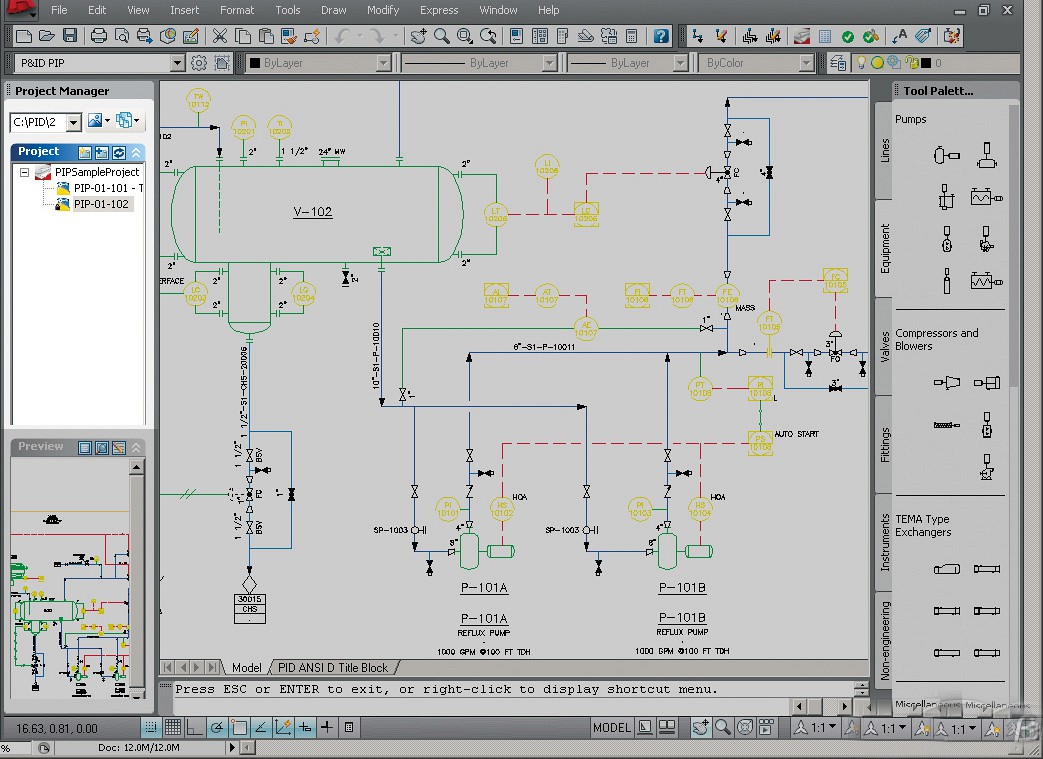
AutoCAD interface
Program AutoCAD- this is a real mastodon among CAD, because the first version was demonstrated back in 1982 at the COMDEX exhibition in Atlantic City. In those glorious times, cars were carbureted, microcircuits were large, and personal computers were just entering the mainstream market.
Most of the software was written for huge IBM mainframes. Nevertheless, an enterprising group of thirteen programmers managed to see the prospect of the development of computer technology and created a product specifically for personal computers. The program attracted everyone's attention after the first demonstration, and the developers realized that now their main task is to improve their "brainchild".
Company Autodesk still doing it successfully and on time. As a result AutoCAD has been the most popular program for working with both 2D drawings and 3D models for over thirty years.
Key Features of AutoCAD
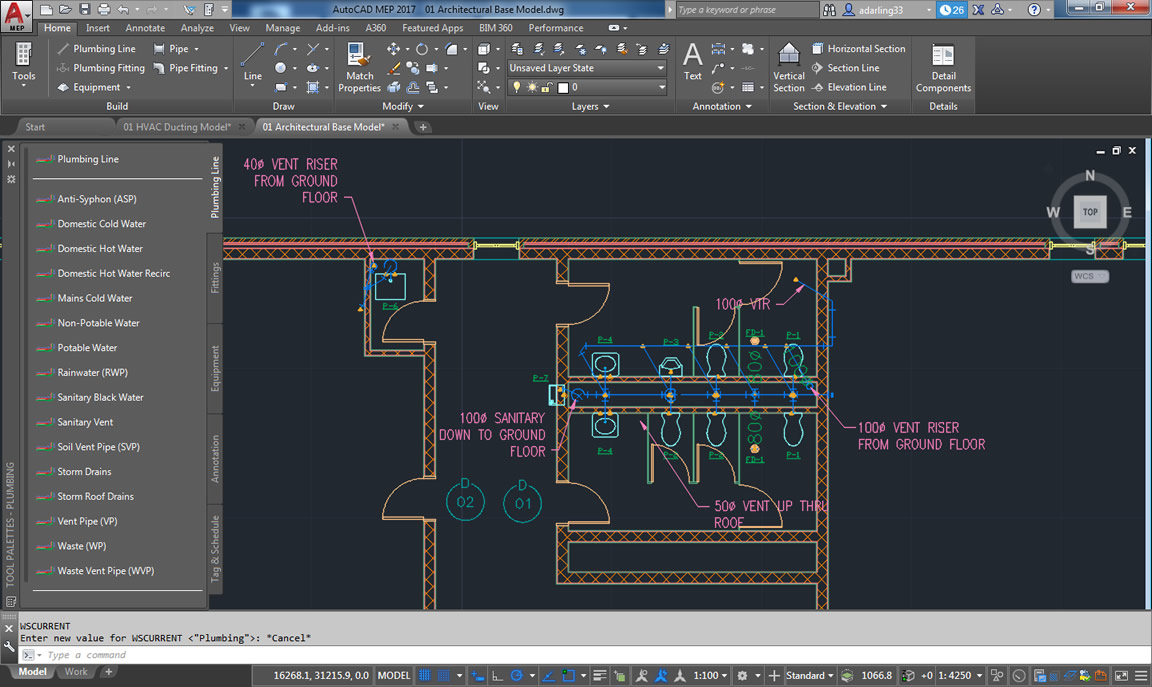
Drawing in AutoCAD
By the way! For our readers there is now a 10% discount on
Speaking of main features AutoCAD, then they are definitely very wide. We will not dwell on the functions and tools provided by the program - there are corresponding textbooks for this. Moreover, to describe all the functions AutoCAD it just takes a lot of time. Let's just say that modern AutoCAD in many ways superior in functionality to its early versions, which were deservedly called "electronic drawing boards".

What AutoCAD Can Do
In addition to using graphic primitives to get more complex objects in two-dimensional space AutoCAD allows you to create full-fledged three-dimensional models using solid polygonal and surface modeling. However, at certain points AutoCAD in the field of 3D modeling, it is inferior to such specialized CAD systems and, for example, SolidWorks.
In addition, AutoCAD provides you with wide opportunities work with layers and annotative objects. The latest versions of the program suggest the possibility of dynamically linking a drawing with real cartographic data and printing models on a 3D printer. AutoCAD works with several file formats. The main ones are DWG and DWT.
DWG is a file format in which the drawing itself is stored directly. This format allows you to store both two-dimensional and three-dimensional objects, and is also supported by other applications from Autodesk.
DWT - a file with this extension is a template. So, for example, you can save a project with all the settings you have set as a template and use it in the future.
AutoCAD Applications
AutoCAD is often used as a base for creating application applications. So, on its basis, programs such as AutoCAD Mechanical, AutoCAD Architecture, AutoCAD Electrical, Promis-e, PLANT-4D, AutoPLANT, GeoniCSandothers.
Interface

AutoCAD 2017.
If you are already familiar with earlier versions, you will understand that the interface AutoCAD 2017 differs little from its predecessors. Of course, it is almost impossible to master this program from scratch without appropriate training. Nevertheless, the interface can be called quite user-friendly, the program is completely Russified, and the purpose of many virtual buttons can be intuitively guessed by looking at their designation.
AutoCAD 2017 System Requirements
AutoCAD keeps pace with the times and makes quite serious demands on your PC. AutoCAD certified for Windows, and for OSX. However, if you own a Mac, only the 2013 version will be available to you today.
| System requirements for AutoCAD 2017 | |
| OS |
|
| CPU | 1 GHz minimum 32 (x86) or 64 (x64) bit processor |
| RAM | For 32-bit AutoCAD 2017:
For 64-bit AutoCAD 2017:
|
| Screen resolution | 1360×768 minimum (1600×1050 or higher recommended), True Color |
| video card | 1360×768 screen resolution support, DirectX 9 or DirectX 11 compatible |
| Free space onHDD | At least 6 GB |
| Browser | Version not earlier than Windows Internet Explorer 9.0 |
| .NET Framework | .NET Framework version 4.6 |
Last changes
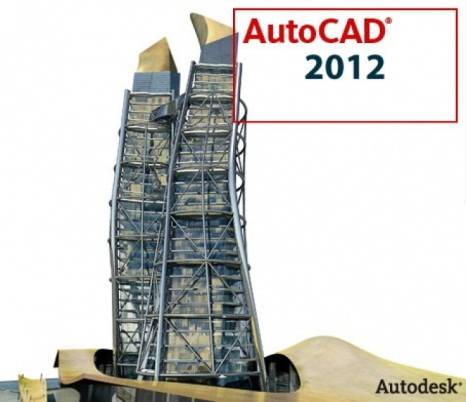
Autodesk AutoCAD
Unlike previous releases AutoCAD the new version allows you to import PDF files. The program also implements the ability to snap to lines with breaks, associative center markers and centerlines. Of course, many users, despite the release of the updated version, continue to use the previous ones. Why not, if your version AutoCAD fully meets the assigned tasks. However, it can be useful to keep track of updates, because. each new version offers new features and improvements.
How to start learning AutoCAD for dummies?
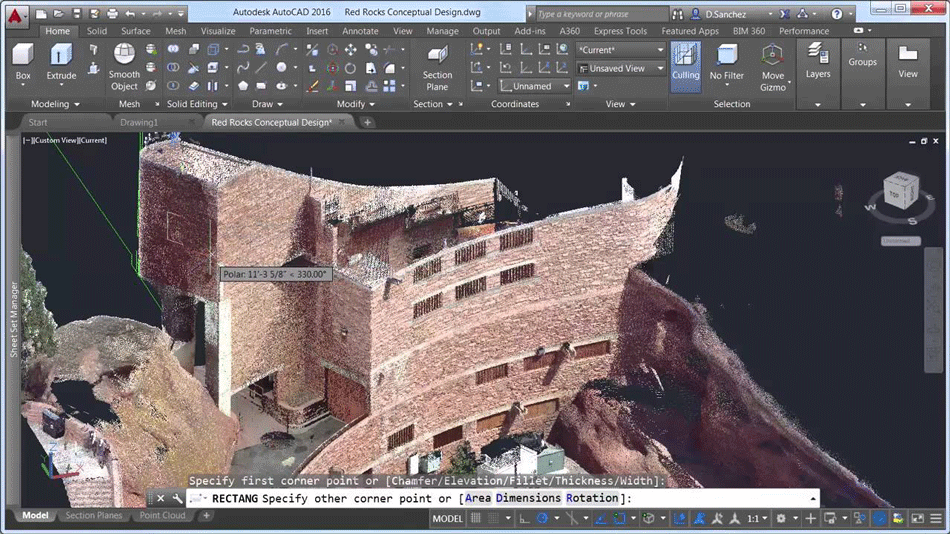
3D modeling in AutoCAD
Yes, when you see the program interface in front of you, with a lot of buttons, you can get confused. However, it is worth remembering that in order to work in AutoCAD You don't have to be a genius at all computer technology. After all, technology CAD- computer-aided design - implies only the automation of processes previously performed by people manually. In other words, AutoCAD, like 30 years ago, is primarily your "electronic" drawing board, which simply replaces a piece of paper and a pencil in your hand.
First of all, you need to realize this fact, understand why you need certain tools. Learn by heart the location of all commands AutoCAD and the sequence of their application is, in principle, an absurd and extremely complex task. So do not rush to cram, but seek to understand. A clear understanding of your task, coupled with knowledge of the principles of interaction between the program and the user, will make the work process in AutoCAD much easier. Self-study AutoCAD, however, it can take a very long time. There are many additional courses for studying this program - after all, when you are helped to understand previously unknown things, the learning process goes faster.
The main advantage of the programAutoCAD - with the appropriate level of user training, it is undoubtedly much more convenient than working on the project directly "by hand". Knowledge of this program with a 100% probability will make you a more valuable and professional specialist.
Often AutoCAD also used for educational purposes. Studying at the university, students of many technical specialties for the first time get acquainted with this CAD system, perform various educational tasks with the help of AutoCAD. The first coursework, which implies the presence of a graphic part, i.e. drawings, forces students to install AutoCAD on your computers, and actively take up the study of this beautiful and very useful software package. Finally, we give advice from - if your future specialty is related to architecture, design, construction, design of any industrial facilities - start studying AutoCAD now. Start, do not feel sorry for yourself, and one day you will remember this advice with a kind word. We wish you good luck in learning AutoCAD, and remember that our experts are always ready to support you!
, AutoCAD Drawing, version 1.4[d], AutoCAD Drawing, version 10[d], AutoCAD Drawing, version 11[d], AutoCAD Drawing, version 13[d], AutoCAD Drawing, version 14[d], AutoCAD Drawing, version 2.0[d], AutoCAD Drawing, version 2.1[d], AutoCAD Drawing, version 2.2[d], AutoCAD Drawing, version 2.5[d], AutoCAD Drawing, version 2.6[d], AutoCAD Drawing, version 2000-2002[d], AutoCAD Drawing, version 2004-2005[d], AutoCAD Drawing, version 2007-2008[d], AutoCAD Drawing, version 2010-2012[d], AutoCAD Drawing, version 2013-2014[d] and AutoCAD Drawing, version 9[d]
AutoCAD- two- and three-dimensional computer-aided design and drafting system developed by Autodesk. The first version of the system was released in 1982. AutoCAD and specialized applications based on it, they are widely used in mechanical engineering, construction, architecture and other industries. The program is available in 18 languages. The level of localization varies from full adaptation to translation of only reference documentation. The Russian version is fully localized, including the command line interface and all documentation, except for the programming manual.
Functionality
Early versions of AutoCAD operated on a small number of elementary objects, such as circles, lines, arcs, and text, from which more complex ones were composed. In this capacity, AutoCAD has earned a reputation as an "electronic drawing board", which remains with him to this day. However, on present stage the possibilities of AutoCAD are very wide and far exceed the possibilities of the "electronic drawing board".
In the area of two-dimensional AutoCAD design still allows you to use elementary graphical primitives to obtain more complex objects. In addition, the program provides very extensive options for working with layers and annotative objects (dimensions, text, symbols). Using the external reference (XRef) mechanism allows you to split the drawing into compound files for which different developers are responsible, and dynamic blocks expand the possibilities of automating 2D design by a common user without the use of programming. Starting with version 2010, AutoCAD introduced support for 2D parametric drafting. In version 2014, it became possible to dynamically link a drawing with real cartographic data (GeoLocation API).
Version AutoCAD programs 2014 includes a complete set of tools for complex 3D modeling (solid, surface and polygon modeling is supported). AutoCAD allows you to get high-quality rendering of models using the mental ray rendering system. The program also implements 3D printing management (simulation result can be sent to a 3D printer) and support for point clouds (allows you to work with 3D scanning results). However, it should be noted that the lack of 3D parameterization does not allow AutoCAD to compete directly with middle-class engineering CAD systems such as Inventor, SolidWorks and others. AutoCAD 2012 includes the Inventor Fusion program, which implements direct modeling technology.
Development and adaptation tools
The widespread use of AutoCAD in the world is due, not least, to advanced development and adaptation tools that allow you to customize the system to the needs of specific users and significantly expand the functionality of the base system. A wide range of application development tools make the base version of AutoCAD a versatile application development platform. On the basis of AutoCAD, Autodesk itself and third-party manufacturers have created a large number of specialized applications, such as AutoCAD Mechanical, AutoCAD Electrical, AutoCAD Architecture, GeoniCS, Promis-e, PLANT-4D, AutoPLANT, SPDS GraphiCS, MechaniCS, GEOBRIDGE, CAD power lines, Rubius Electric Suite and others.
Dynamic Blocks
Dynamic blocks are two-dimensional parametric objects with a custom set of properties. Dynamic blocks provide the ability to store in one block (a set of graphic primitives) several geometric implementations that differ from each other in size, mutual arrangement of block parts, visibility of individual elements, etc. With the help of dynamic blocks, libraries of standard elements can be reduced (one dynamic block replaces a few common ones). Also, the active use of dynamic blocks in some cases can significantly speed up the release working documentation. Dynamic blocks first appeared in AutoCAD 2006.
macros
Action Macros
Action Macros first appeared in AutoCAD 2009. The user executes a sequence of commands that is recorded using the Action Recorder tool.
Menu Macros
The user has the ability to create his own buttons, with which you can call a series of commands (macroes) pre-recorded according to certain rules. Macros can include expressions written in DIESEL and AutoLISP .
DIESEL
DIESEL (Direct Interprietively Evaluated String Expression Language) is a string manipulation language with a small number of functions (28 functions in total). It allows you to form strings that must have variable text depending on some conditions. The result is output as a string, which is interpreted by AutoCAD as a command. The DIESEL language is mainly used to create complex macros as an alternative to AutoLISP. This language is of particular importance for the AutoCAD LT version, which lacks all programming tools except DIESEL. This language first appeared in AutoCAD R12.
Visual LISP
AutoLISP
AutoCAD VBA
Starting with version R14, AutoCAD introduced support for VBA (Visual Basic for Application). Unlike VisualLISP, VBA is a visual programming environment, however, VBA applications work with AutoCAD only through ActiveX, and interaction with AutoLISP is very limited. The advantages of VBA are more complete support for ActiveX and the ability to load DLLs.
Starting with AutoCAD 2010, the VBA development environment is not included with the software. Autodesk is phasing out VBA support in AutoCAD in favor of .NET. . In AutoCAD 2014, VBA has been updated to version 7.1, but the development environment is still installed separately.
ObjectARX
The ObjectARX SDK is an add-on to the Microsoft Visual Studio development environment and contains special libraries, header files, examples, and auxiliary tools designed to create programs that operate exclusively in the AutoCAD environment. ARX applications can access the drawing database and geometry engine directly. You can create custom commands similar to standard AutoCAD commands. For the first time, the ObjectARX package was implemented for AutoCAD R13, previously there were ADS packages (for AutoCAD R11) and ARX (for AutoCAD R12) similar in purpose. The version designation of ObjectARX is the same as the version designation of AutoCAD for which this package is intended. Programs built for one particular version of AutoCAD are not compatible with other versions. The problem of compatibility is usually solved by recompiling the program in the appropriate version of ObjectARX.
.NET
COM
Undocumented ability to work with AutoCAD in all programming languages that support COM technology. The Delphi programming language is the most popular among developers.
JavaScript
In version 2014, the ability to load and execute scripts written in JavaScript was introduced. In this case, the website from which the script is loaded must be included in the list of trusted sites defined in the corresponding system variable .
Supported operating systems
AutoCAD is certified to run on the Microsoft Windows and OS X family of operating systems. Version 2014 supports OS Windows XP (SP3), Windows 7 and Windows 8. Support for OS X is currently limited to 2013 only. The package (for Windows) includes versions for both 32-bit and 64-bit systems. AutoCAD supports the use of computing resources of multiprocessor and multicore systems.
AutoCAD LT
AutoCAD 360
AutoCAD 360(previously AutoCAD WS) is an Internet application based on cloud computing, as well as a program for mobile devices on Apple iOS (iPad and iPhone) and Android, distributed according to the freemium business model. The company offers 3 tariff plans - free (Free) and 2 paid: Pro and Pro Plus. Users of the free plan have access to basic tools for viewing and editing DWG files uploaded to Autodesk 360 online storage, but the toolset is rather limited. For those who subscribe to paid plans, advanced features are offered: the creation of new drawings, additional editing tools, support for large files, increased amount of available online storage, and others. It is possible to connect AutoCAD 360 to other cloud services (in addition to Autodesk 360), but editing files from third-party sources is available only for paid plans.
AutoCAD for desktop operating systems has a direct connection to this service (starting with version 2012).
Student licenses
Student editions of AutoCAD, intended solely for educational use by students and educators, are available as a free download from the Autodesk Education Community website. Functionally student AutoCAD version is no different from the full one, with one exception: DWG files created or edited in it have a special mark (the so-called educational flag), which will be placed on all views when printing the file (regardless of which version - student or professional - printing is in progress).
Specialized applications based on AutoCAD
- AutoCAD Architecture- a version aimed at architects and containing special additional tools for architectural design and drafting, as well as means of issuing construction documentation.
- AutoCAD Electrical designed for designers electrical systems management and is distinguished by a high level of automation of standard tasks and the presence of extensive libraries of symbols.
- AutoCAD Civil 3D- a solution for the design of infrastructure facilities, designed for land surveyors, designers of the general plan and designers of linear structures. In addition to the core capabilities, AutoCAD Civil 3D can perform activities such as geospatial analysis for site selection, stormwater analysis for environmental compliance, budgeting, and dynamic excavation sizing.
- AutoCAD MEP design oriented engineering systems civil engineering facilities: plumbing and sewerage systems, heating and ventilation, electrical and fire safety. Implemented the construction of a three-dimensional parametric model, obtaining drawings and specifications based on it.
- AutoCAD Map 3D was created for specialists who carry out projects in the field of transport construction, energy supply, land and water use and allows you to create, process and analyze design and GIS information.
- AutoCAD Raster Design is an image vectorization program that supports optical character recognition (OCR).
- AutoCAD Structural Detailing- a tool for the design and calculation of steel and reinforced concrete structures, which supports building information modeling technology . The basic objects are beams, columns, plates and reinforcing bars, etc.
- AutoCAD Excad allows electrical engineers to create schematics of electrical equipment using scripts and symbol libraries.
- AutoCAD Mechanical is intended for design in mechanical engineering and is distinguished by the presence of libraries of standard components (more than 700 thousand elements), generators of components and calculation modules, tools for automating design tasks and compiling documentation, and the ability to work together.
- AutoCAD P&ID is a program for creating, editing and managing piping and instrumentation diagrams.
- AutoCAD Plant 3D- a tool for designing technological objects. AutoCAD Plant 3D integrates AutoCAD P&ID.
The AutoCAD SPDS module is DWG, a proprietary format originally developed by Autodesk. To exchange data with users of other CAD systems, it is proposed to use the open DXF format. It should be noted that DWG and DXF files can be read by most modern CAD systems, since these formats are the de facto standard in the field of two-dimensional design. To publish drawings and 3D models (without the ability to edit), the DWF format, also created by Autodesk, is used.
In addition, the program supports writing and reading (through import/export procedures) files of 3DS, DGN, SAT and some other formats. Starting with version 2012, AutoCAD allows you to convert files derived from 3D CAD systems (such as Inventor ,
Conventions: Not supported. - St. Petersburg. : BHV, 2007. - 416 p. - AutoCAD for architects. - M.: "Dialectics", 2009. - S. 592. - ISBN 978-5-8459-1754-6 / Movchan D. A .. - St. Petersburg. : DMK-Press, 2016. - 384 p. - ISBN 978-5-97060-340-6.
The new version of the most popular automated design system AutoCAD 2017 appeared on March 21, 2016, and AutoCAD 2016 became the most stable. With the help of this software package, most of the electronic graphic documentation is produced in our country. Why was AutoCAD originally created, what is it now and what are the development prospects? About everything in order.
About creating AutoCAD
The history of AutoCAD begins in 1982, when in January, programmer John Walker suggested to several colleagues that they create an application development firm. software. Initially, it was planned to name the company and the first program differently, but in April of the same year, Autodesk was registered, and four months later, AutoCAD. That this application will be in demand, we already knew then. Thus, August 25 is considered the birth date of the popular program.
Initially, the young company offered two versions of the program: for 8-bit processors working with the CP / M operating system (Autocad-80), and a version for 16-bit processors in the MS-DOS operating system (Autocad-86). The program cost exactly one thousand US dollars.
Released in May 1985, version 2.1 had a special language for writing expressions and describing variables, later called AutoLisp. The first Russian version of the package appeared in 1988.
Starting with version 11 of AutoCAD, released in October 1990, it became possible to create three-dimensional models. Significant features were added to the program in 2006. AutoCAD 2007 made it possible to choose one of several types of user interfaces, had a new convenient panel and tools for working with three-dimensional objects, and allowed you to create animation.
Since then, the company has been steadily producing new version package annually. There are currently over 35 desktop-only versions released. There are mobile versions, "AutoCAD" Russian version, as well as for operating systems Windows, OS X, iOS.  In addition to AutoCAD, the company also produces other popular and world-famous packages related to visual modeling and drawing creation:
In addition to AutoCAD, the company also produces other popular and world-famous packages related to visual modeling and drawing creation:
- 3ds max.
- Maya.
- Fusion 360.
- Inventor Professional.
Purpose
So what is AutoCAD, what kind of computer-aided design system is it? The main function of this CAD system is 2D drawing and creating project documentation in various fields of knowledge. The environment has various tools for working with standard and arbitrary shapes, allowing you to create any 3D models and analyze them. The approach based on dynamic blocks allows you not to redraw repeating elements, but to take them from the library or change the parameters of already drawn ones. The availability of 3D printing capabilities makes it easy to create physical layouts by printing designs on a 3D printer. 
The presence of a mechanism for saving operations and creating macros allows you to enter commands without even having programming experience. A variety of tools for working with 2D and 3D objects make it easy to switch between different modes display, scale and rotate objects. "AutoCAD" has the necessary tools to create animated videos that can be used in presentations. 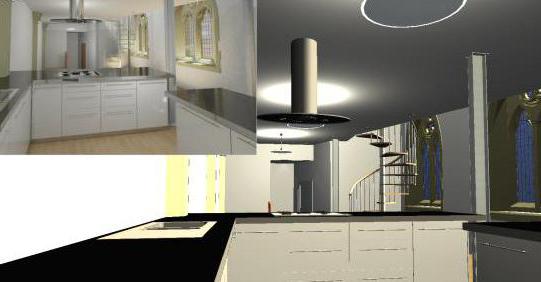
What files does it work with
AutoCAD files have the extension DWG and DXF. C files are the most popular format for storing digital drawings (DWG-drawing). Autodesk owns this format, and for its products it is the main one. Design environments from other manufacturers can also work with this format. The program allows you to open and use files of other common graphic and text formats.
DXF files (drawing exchange format) allow the exchange of graphic information between CAD applications. This format is also owned by Autodesk but is supported by most CAD systems. 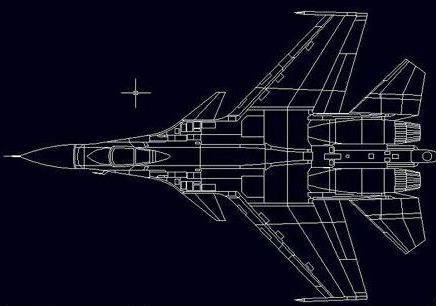
System requirements
Minimum requirements for the computer program "AutoCAD" 2016 (Russian version):
- operating system Windows 8.1, operating system Windows 7 in a version not lower than "Home Premium";
- 32-bit or 64-bit Intel or AMD processors for the appropriate version of AutoCAD with a frequency of at least 1.0 GHz and support for SSE2 instructions;
- from 2 GB of RAM;
- a monitor with a resolution of at least 1024*768 and a video card compatible with DirectX 9.
The program also needs:
- Windows Internet Explorer browser version 9.0 or higher;
- flash player Adobe Flash Player version at least 10;
- .NET Framework 4.5 libraries.
For AutoCAD 2017 minimum system requirements slightly higher: in particular, you need a monitor with a resolution of at least 1360 * 768, a set of .NET Framework 4.6 libraries.
User Interface Features
The design system is based on an interactive approach, which implies a dialogue between the user and the program in the language of special commands. Almost all commands have different variants of execution. How exactly to use the command, the system decides based on the analysis of the user's actions and dialogue with him.
The standard interface of "AutoCAD" is a workspace called a model, toolbars, additional windows and a line for entering commands. Since version 2009, the toolbars are located on the menu in the form of a ribbon, but it is possible to switch to the classic view. The menu in the form of the so-called Ribbon-tape is a general trend of modern application programs, Autodesk products have such an interface.
The composition of the tape can be customized to the needs of a particular user. The ribbon has tabs, each of which includes the necessary tools similar in groups. All elements have an additional context menu, traditionally invoked by the right mouse button.
Development trends
The development vector of Autocad is similar to the general trend of improvement. Stability, accuracy and performance of 3D graphics are consistently improved, various intellectual tools are being introduced, and compatibility with other software products from Autodesk and other companies.
Versions of "AutoCAD" for tablet computers, smartphones on popular mobile operating systems are produced. Of course, no one talks about such an "AutoCAD", what is it real alternative traditional versions, but it opens up opportunities to perform some limited actions with projects literally on the run. Do not forget in the company "Autodesk" and about cloud technologies. The Autocad WS version allows you to store information in the Autodesk 360 cloud and work with them over the network.
AutoCAD- two- and three-dimensional computer-aided design and drafting system developed by Autodesk. The first version of the system was released in 1982. AutoCAD and specialized applications based on it are widely used in mechanical engineering, construction, architecture and other industries. The program is available in 18 languages. The level of localization ranges from full customization to translation of reference documentation only. The Russian version is fully localized, including the command line interface and all documentation, except for the programming manual.
Functionality
Early versions of AutoCAD operated on a small number of elementary objects, such as circles, lines, arcs, and text, from which more complex ones were composed. In this capacity, AutoCAD has earned a reputation as an "electronic drawing board", which remains with him to this day. However, at the present stage, the capabilities of AutoCAD are very wide and far exceed the capabilities of the "electronic drawing board".
In the field of two-dimensional design, AutoCAD still allows you to use elementary graphic primitives to obtain more complex objects. In addition, the program provides very extensive options for working with layers and annotative objects (dimensions, text, symbols). Using the external reference mechanism (XRef) allows you to split the drawing into compound files for which different developers are responsible, and dynamic blocks expand the possibilities of automating 2D design by a regular user without the use of programming. Starting with version 2010, AutoCAD introduced support for 2D parametric drafting.
The current version of the program (AutoCAD 2012) includes a complete set of tools for complex 3D modeling(Supports solid, surface and polygon modeling). AutoCAD allows you to get high-quality rendering of models using the mental ray rendering system. The program also implements 3D printing management (simulation result can be sent to a 3D printer) and support for point clouds (allows you to work with 3D scanning results). However, it should be noted that the lack of 3D parameterization does not allow AutoCAD to compete directly with middle-class engineering CAD systems such as Inventor, SolidWorks and others. AutoCAD 2012 includes the Inventor Fusion program, which implements direct modeling technology.
Development and adaptation tools
The widespread use of AutoCAD in the world is due, not least, to advanced development and adaptation tools that allow you to customize the system to the needs of specific users and significantly expand the functionality of the base system. A wide range of application development tools make the base version of AutoCAD a versatile application development platform. On the basis of AutoCAD, Autodesk itself and third-party manufacturers have created a large number of specialized applications, such as AutoCAD Mechanical, AutoCAD Electrical, AutoCAD Architecture, GeoniCS, Promis-e, PLANT-4D, AutoPLANT, SPDS GraphiCS, MechaniCS and others.
Dynamic Blocks
Dynamic blocks are two-dimensional parametric objects with a custom set of properties. Dynamic blocks provide the ability to store in one block (a set of graphic primitives) several geometric realizations that differ from each other in size, relative position of block parts, visibility of individual elements, etc. Using dynamic blocks, you can reduce libraries of standard elements (one dynamic block replaces several ordinary ones). Also, the active use of dynamic blocks in some cases can significantly speed up the release of working documentation. Dynamic blocks first appeared in AutoCAD 2006.
macros
Action Macros
Action Macros first appeared in AutoCAD 2009. The user executes a sequence of commands that is recorded using the Action Recorder tool. The recorded macro can be edited and saved, and subsequently transferred to the toolbar, or launched from a special menu.
Menu Macros
The user has the ability to create his own buttons, with which you can call a series of commands (macroes) pre-recorded according to certain rules. Macros can include expressions written in DIESEL and AutoLISP .
DIESEL
DIESEL (Direct Interprietively Evaluated String Expression Language) is a string manipulation language with a small number of functions (28 functions in total). It allows you to form strings that must have variable text depending on some conditions. The result is output as a string, which is interpreted by AutoCAD as a command. The DIESEL language is mainly used to create complex macros as an alternative to AutoLISP. This language is of particular importance for the AutoCAD LT version, which lacks all programming tools except DIESEL. This language first appeared in AutoCAD R12.
Visual LISP
AutoLISP
AutoCAD VBA
Starting with version R14, AutoCAD introduced support for VBA (Visual Basic for Application). Unlike VisualLISP, VBA is a visual programming environment, however, VBA applications work with AutoCAD only through ActiveX, and interaction with AutoLISP is very limited. The advantages of VBA are more complete support for ActiveX and the ability to load DLLs.
Starting with AutoCAD 2010, the VBA IDE is not enabled by default. Autodesk is phasing out VBA support in AutoCAD in favor of .NET. .
ObjectARX
The ObjectARX SDK is an add-on to the Microsoft Visual Studio development environment and contains special libraries, header files, examples, and auxiliary tools designed to create programs that operate exclusively in the AutoCAD environment. ARX applications can access the drawing database and geometry engine directly. You can create custom commands similar to standard AutoCAD commands. For the first time, the ObjectARX package was implemented for AutoCAD R13, previously there were ADS packages (for AutoCAD R11) and ARX (for AutoCAD R12) similar in purpose. The version designation of ObjectARX is the same as the version designation of AutoCAD for which this package is intended. Programs built for one particular version of AutoCAD are not compatible with other versions. The problem of compatibility is usually solved by recompiling the program in the appropriate version of ObjectARX.
.NET
COM
Undocumented ability to work with AutoCAD in all programming languages that support COM technology. The Delphi programming language is the most popular among developers.
Supported operating systems
AutoCAD is certified to run on the Microsoft Windows family of operating systems. Version 2011 supports Windows XP (with SP2), Windows Vista (with SP1), and Windows 7. On October 15, 2010, AutoCAD 2011 for Mac OS X was officially released (before that, the last version for Mac OS was AutoCAD Release 12, released in 1992). The package (for Windows) includes versions for both 32-bit and 64-bit systems. AutoCAD supports the use of computing resources of multiprocessor and multicore systems.
AutoCAD LT
AutoCAD LT is a dedicated 2D drafting solution. It costs less than the full version of AutoCAD (about a third of the cost of the basic version). AutoCAD LT completely lacks 3D modeling and visualization tools (however, it is possible to view 3D models made in the basic version), system adaptation software tools are excluded (such as AutoLISP and VBA, which makes it impossible to install useful applications and add-ons that extend the basic capabilities of AutoCAD (GeoniCS, GraphiCS SPDS, Project Studio CS), there is no possibility to create parametric drawings, and also a number of other differences.It was first introduced in 2009 as the 2010 version.
| Official name | User interface | some 2D drawing functions | Explanatory elements | Blocks | Printing and publishing | Optimization |
|---|---|---|---|---|---|---|
| AutoCAD 2010LT | Yes | Yes | No | Yes | No | No |
| AutoCAD 2011LT | partially | partially | partially | Yes | partially | No |
| AutoCAD 2012LT | partially | partially | partially | Yes | partially | Yes |
| AutoCAD 2013LT | No | No | Yes | Yes | Yes | Yes |
AutoCAD WS
A free cloud-based internet application, as well as a program for mobile devices on Apple iOS (iPad and iPhone) and Android. Allows you to view and edit DWG files uploaded to the AutoCAD WS Online workspace online storage, with a fairly limited set of editing tools . AutoCAD 2012 provides the ability to link directly to this service.
Student licenses
Student editions of AutoCAD, intended solely for educational use by students and educators, are available as a free download from the Autodesk Education Community website. functional student version AutoCAD is no different from the full one, with one exception: DWG files created or edited in it have a special mark (the so-called educational flag) that will be placed on all views when the file is printed (regardless of which version - student or professional - printing is performed).
Specialized applications based on AutoCAD
- AutoCAD Architecture- a version aimed at architects and containing special additional tools for architectural design and drafting, as well as tools for issuing building documentation.
- AutoCAD Electrical designed for designers of electrical control systems and features a high level of automation of common tasks and the presence of extensive libraries of symbols.
- AutoCAD Civil 3D- a solution for the design of infrastructure facilities, designed for land surveyors, designers of the general plan and designers of linear structures. In addition to the core capabilities, AutoCAD Civil 3D can perform activities such as geospatial analysis for site selection, stormwater analysis for environmental compliance, budgeting, and dynamic excavation sizing.
- AutoCAD MEP focused on the design of engineering systems of civil engineering facilities: plumbing and sewerage, heating and ventilation, electrical and fire safety systems. Implemented the construction of a three-dimensional parametric model, obtaining drawings and specifications based on it.
- AutoCAD Map 3D was created for specialists performing projects in the field of transport construction, energy supply, land and water use and allows you to create, process and analyze design and









